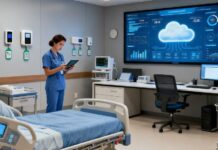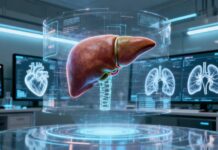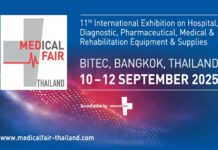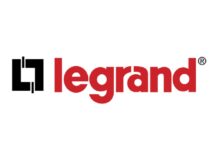Applications that can be envisaged with this EEG prototype system include entertainment and infotainment, for example adaptive game environment reacting to the player’s cognitive state, or e-learning where the difficulty can be adapted based on cognitive load; lifestyle, such as neuro-feedback; safety, for example monitoring drowsiness of drivers or cognitive load of occupational health services in action; and medical such as early warning system for epileptic patients or brain typing enabling people with motoric disabilities to communicate.
At the heart of the system is imec’s 8-channel ultra-low-power analog readout ASIC (application-specific integrated circuit). The ultra-low power readout ASIC consumes only 200µW and features high common mode rejection ratio (CMRR) of 120dB and low noise (input referred noise of 55nV/vHz). These performances are achieved at high input impedance (1GO), which makes it compatible with the use of dry electrodes. The electronics, including ASIC, radio, and controller chips are integrated in a small wireless EEG system of 25mmx35mmx5mm dimensions, that can easily be embedded in headsets, helmets or other accessories. The signal to noise ratio of the system is 25dB on real EEG signals. The entire system consumes only 3.3mW for continuous recording and wireless transmission of 1 channel, and 9.2mW for 8 channels. This gives between 1.5 to 4 days of autonomy on a small 100mAh Li-ion battery, depending on the mode of operation.
Today’s EEG recordings are performed in hospital or lab settings, and require trained personnel to apply the electrodes with gel. Taking EEG to the home environment requires a system using dry electrodes, that is easy to set up by the user and does not require recharging the battery every few hours. To that purpose, the wireless EEG system has been integrated in a prototype EEG headset. The prototype headset can be easily adapted to the head of the user by extending a plastic bridge near the back of the head and by moving the part that contains the electronics upwards or downwards. On top of that, a spring suspension, guaranteeing improved robustness, and a magnetized pivoting mechanism can be used for fine adaptation to the head. The magnetic connection of the electrodes allows quick and easy replacement making it a hygienic solution. Gel injection is still possible if required for certain applications. Today the system relies on commercial off-the-shelf Ag/AgCl electrodes, which may lead to certain level of discomfort. In a few years, research on dry electrodes will result in increased comfort and higher signal quality. Combined with circuit and algorithm innovation, this will eventually enable monitoring brain waves on-the-move.
Industry can get access to this technology by joining the Human++ program as research partner or by licensing agreements for further product development. Within the Human++ program, imec and Holst Centre develop solutions for an efficient and better healthcare. Intelligent body area networks with wireless sensors, such as this EEG, promise to be a solution for more comfortable healthcare systems. This will allow ambulatory monitoring of people, which increases the comfort level of patients and is a cost- and time-efficient alternative for current EEG monitoring systems. And, home monitoring results in daily life measurements that cannot be measured in a clinical environment.
About imec
Imec performs world-leading research in nanoelectronics. Imec leverages its scientific knowledge with the innovative power of its global partnerships in ICT, healthcare and energy. Imec delivers industry-relevant technology solutions. In a unique high-tech environment, its international top talent is committed to providing the building blocks for a better life in a sustainable society. Imec is headquartered in Leuven, Belgium, and has offices in Belgium, the Netherlands, Taiwan, US, China and Japan. Its staff of more than 1,750 people includes over 550 industrial residents and guest researchers. In 2009, imec’s revenue (P&L) was 275 million euro. Further information on imec can be found at www.imec.be.
Note: Imec is a registered trademark for the activities of IMEC International (a legal entity set up under Belgian law as a “stichting van openbaar nut”), imec Belgium (IMEC vzw supported by the Flemish Government), imec the Netherlands (Stichting IMEC Nederland, part of Holst Centre which is supported by the Dutch Government), imec Taiwan (IMEC Taiwan Co.) and imec China (IMEC Microelectronics (Shangai) Co. Ltd.).
About Holst Centre














